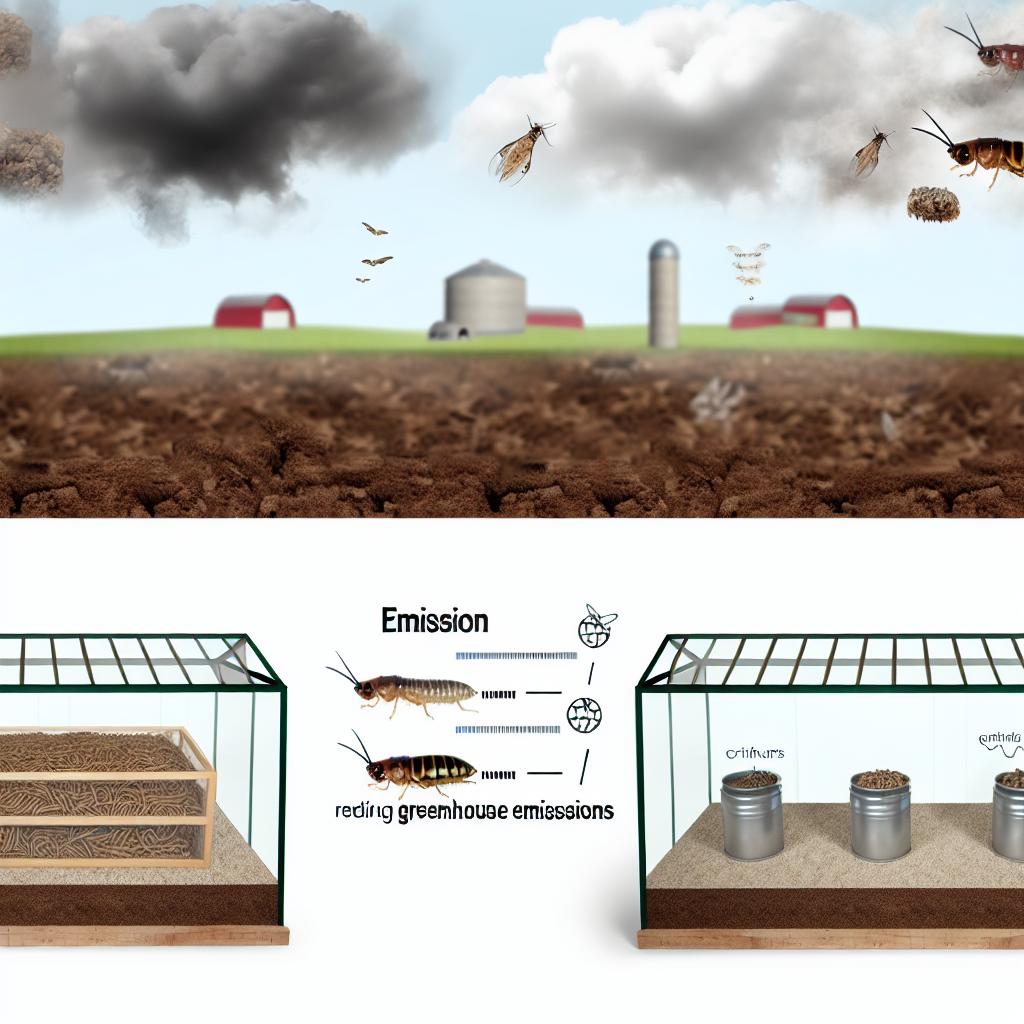Introduction
In recent years, the concept of insect farming has gained attention as a sustainable alternative to traditional livestock farming. Insects offer numerous environmental benefits, most notably the potential to significantly reduce greenhouse gas emissions. This emerging agricultural practice is setting a new precedent for sustainability and environmental conservation.
The Environmental Impact of Traditional Livestock Farming
Traditional livestock farming contributes substantially to greenhouse gas emissions. According to the Food and Agriculture Organization (FAO), the livestock sector is responsible for approximately 14.5% of all human-induced greenhouse gas emissions. These emissions stem from various processes and activities associated with livestock farming.
Methane emissions are a major concern, coming primarily from enteric fermentation in ruminants such as cows and sheep. These animals produce methane as a byproduct of their digestive processes. Additionally, carbon dioxide and nitrous oxide emissions occur through manure management and the production of animal feed. These emissions significantly contribute to the global environmental footprint, prompting a search for more sustainable farming practices.
Advantages of Insect Farming
Insect farming presents a viable solution to mitigate the environmental impact of traditional livestock farming. The advantages of this innovative agricultural practice are manifold:
1. Lower Greenhouse Gas Emissions: Compared to conventional livestock such as cattle and pigs, insects emit considerably fewer greenhouse gases. One of the primary reasons for this reduction is that insects do not produce methane during digestion. Methane is known to be one of the most potent greenhouse gases, and minimizing its emission could drastically lower the agricultural carbon footprint.
2. Minimal Land and Water Use: Rearing insects requires significantly less land and water than traditional livestock farming. Insects can be farmed vertically, using stacked containers, which optimizes space and reduces the need for large swathes of land. This efficient use of land minimizes deforestation and habitat destruction. Moreover, insects need substantially less water, alleviating the strain on water resources and contributing to overall ecosystem conservation.
3. Efficient Feed Conversion: Insects possess a remarkable ability to convert feed into edible body mass more efficiently than traditional livestock. For example, crickets require much less feed than cattle to produce the same amount of protein. This heightened efficiency translates into a reduced requirement for agricultural crops used in feed production, leading to decreases in emissions associated with crop farming, transportation, and storage.
Challenges and Considerations
While insect farming offers significant environmental benefits, it does face a range of challenges and considerations. These aspects are crucial for the widespread adoption and scale-up of insect farming as a mainstream agricultural practice.
One major challenge is societal acceptance. Many cultures around the world still perceive insects as pests or nuisances rather than as viable food sources. Changing public perception involves educating consumers about the nutritional benefits and environmental advantages of incorporating insects into their diets. Efforts are already underway in some countries to introduce insect-based foods into the mainstream market through innovative culinary creations and food products.
Regulatory frameworks also pose a challenge. The regulatory landscape for insect farming is still developing, with different countries adopting varied standards and guidelines. Establishing consistent regulations globally will be crucial to ensuring the safety and quality of insect-based products, facilitating international trade, and encouraging investment in this sector.
Additionally, scaling production to meet growing demands is a logistical and technological challenge. Insect farming must evolve to produce at larger scales while maintaining efficiency and sustainability. This requires innovations in farming techniques, such as automation and improved husbandry practices, to accommodate increased production without compromising quality or environmental benefits.
Conclusion
Insect farming stands as a promising agricultural innovation with the potential to mitigate the environmental impacts of traditional livestock farming. By significantly reducing greenhouse gas emissions, conserving resources, and efficiently converting feed, insect farming offers a sustainable solution to some of the pressing environmental issues facing the planet today. As this industry continues to grow, it holds the promise of transforming the global agricultural landscape for a more sustainable future.
In conclusion, insect farming is more than just an alternative source of protein—it is a paradigm shift in agricultural practices. By focusing on sustainability and environmental conservation, it offers a pathway to reduce the carbon footprint of food production while still catering to the nutritional needs of a growing global population. As research and technology advance, the widespread adoption of insect farming could become a reality, helping to balance human consumption with ecological preservation, and ultimately leading to a more resilient and sustainable food system worldwide.

